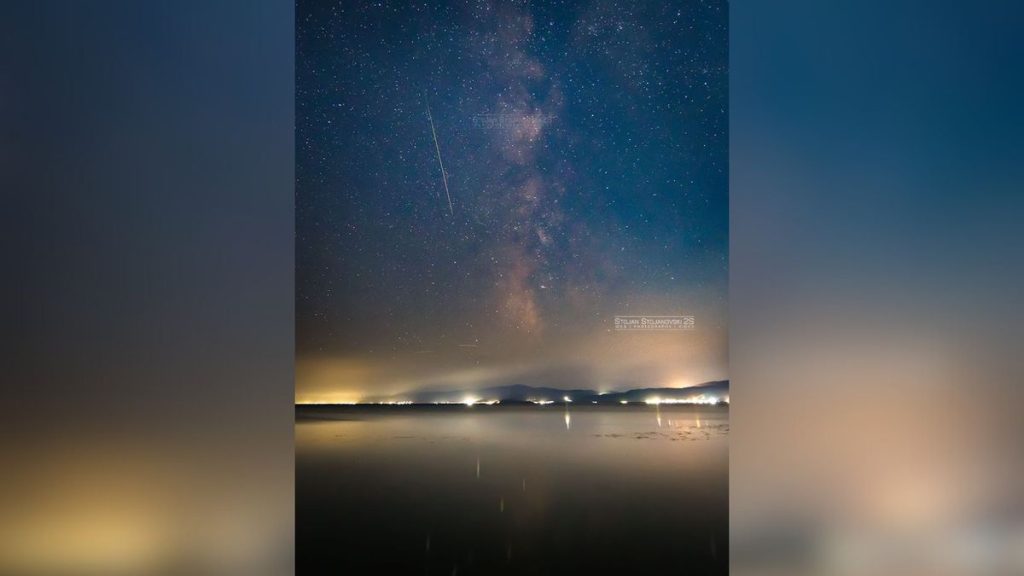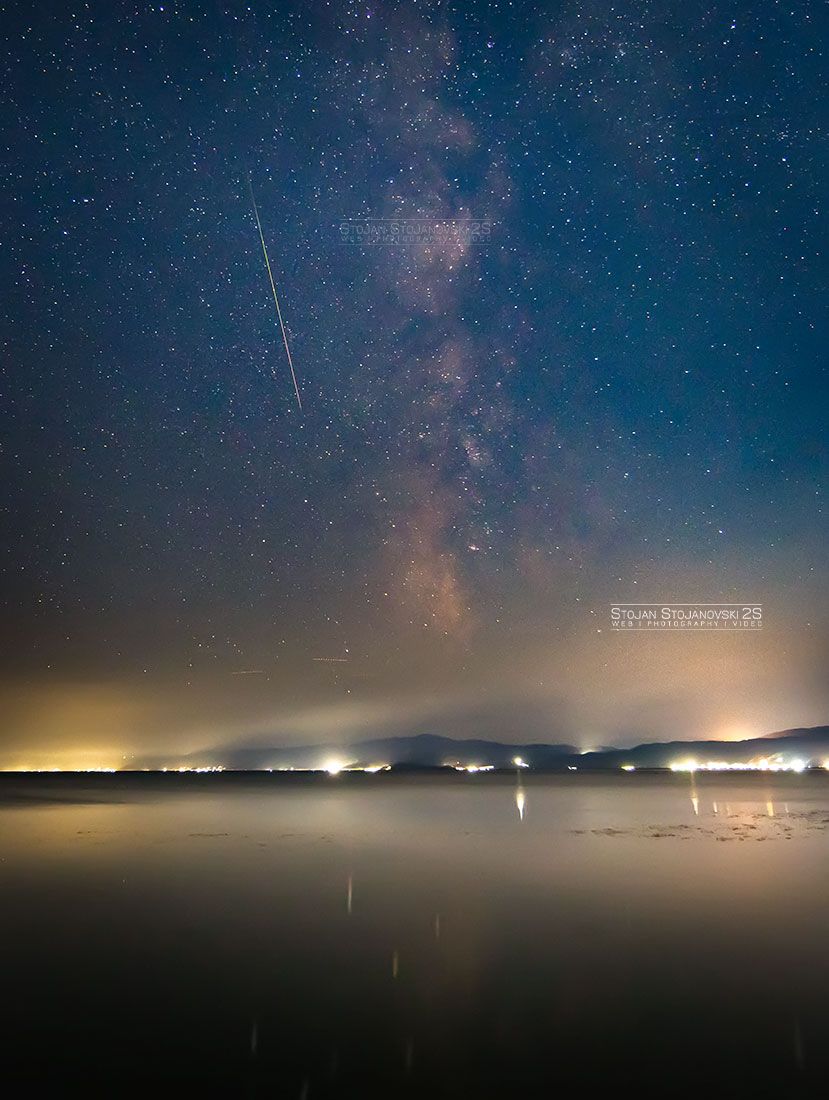
Watch a Perseid fireball light up the skies above Macedonia in this striking video (Image Credit: Space.com)
In the early hours of Tuesday morning (Aug. 13), at around 1:03 a.m. local time, a dazzling Perseid fireball streaked across Macedonian skies above Lake Ohrid. A webcam system installed throughout the Lake Ohrid region captured the dramatic sight.
“The video with the meteor is incredible. We see in the video 7 seconds of a falling meteor. I love technology today,” photographer Stojan Stojanovski, who created the webcam system, told Space.com in an email.
The Perseid meteor shower, also known as the Perseids, is visible annually from mid-July until late August. This year, the shower peaked around the night of Aug. 11 and before dawn on Aug. 12. The few nights surrounding the peak are also good for catching a glimpse of these iconic meteors.
The shower is caused by Earth passing through debris — bits of ice and rock — left behind by Comet Swift-Tuttle which last passed by Earth in 1992. When the debris hits Earth’s atmosphere, it burns up and creates the dramatic “shooting stars“ we know as the Perseids. Most of the Perseids are tiny, about the size of a sand grain. Almost none of the fragments hit the ground, but if one does, it’s called a meteorite.
The difference between a meteor and a fireball like the one seen in the video lies with brightness. Simply put, meteors brighter than Venus are classified as fireballs.
Stojanovski began setting up the webcam network in 2018 with help from local businesses to promote tourism in the Lake Ohrid region, as part of Ohrid Info. Stojanovski hopes that the installment of 180-degree cameras will give him and the local Ohrid Astronomy Association an even better view of the night sky.
“The 180-degree point-of-view cameras in the future will catch more meteors I hope,” Stojanovski said.

Stojanovski also captured a stunning photograph of a Perseid meteor above Lake Ohrid on Aug. 11, 2024. The glow from wildfires is visible in the distance.
“There are some wildfires and it’s hard to find good spots in the mountains”, Stojanovski told Space.com.





